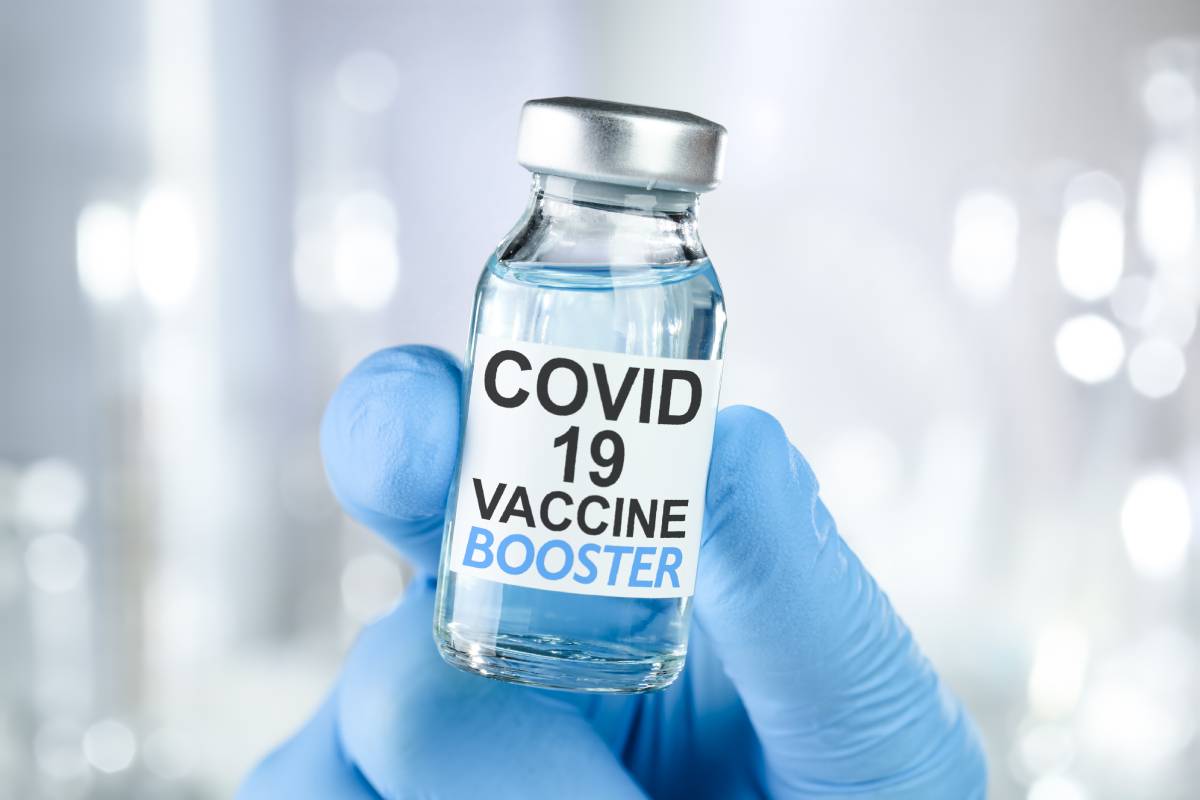The Omicron variant of SARS-CoV-2, the causative agent of COVID-19, was first identified in November 2021 and quickly proved to be more infectious than previous variants of the virus.1 While vaccination has been instrumental in preventing hospitalization and mortality resulting from infection, Omicron can infect even those who received three doses of a COVID-19 vaccine.2 Furthermore, in April 2022, two new Omicron subvariants, BA.4 and BA.5, were identified, and they were found to be even more infectious than the previous subvariants and resistant to antibodies against them.3 As of mid-July 2022, BA.4 and BA.5 comprised about 80 percent of all active COVID-19 cases in the United States.4 Several vaccine developers are researching boosters that have been updated to better protect against today’s COVID-19.
BA.4 and BA.5 are more infectious than the earlier Omicron subvariants because they contain additional mutations in the virus spike protein.3 As such, updated COVID-19 boosters that specifically target the BA.4 and BA.5 spike protein could prove instrumental in curbing the spread of these subvariants and their potential offshoots. On June 30, the U.S. Food and Drug Administration advised vaccine manufacturers to update their COVID-19 vaccines by adding a component to their formulas that targets the BA.4 and BA.5 spike protein.5
Both the Pfizer-BioNTech and Moderna COVID-19 vaccines are mRNA vaccines: they use a segment of the viral spike protein’s mRNA to generate an immune response against the protein. In the event of a future exposure to SARS-CoV-2, which is studded with spike proteins and uses them to enter human cells, the body’s immune system recognizes the spike protein and attacks the virus particle. The FDA guidance, therefore, was not technically challenging: the BA.4 and BA.5 spike protein mRNA can be added to the pre-existing vaccine formulas to create a “bivalent,” or two component, vaccine that, at least in theory, provides protection against both classes of Omicron subvariants. Data from Pfizer-BioNTech trials show that a dose of the bivalent booster vaccine generated a strong immune response against BA.1, BA.2, BA.4, and BA.5, as well as the original strain of SARS-CoV-2.6
It is expected that these updated Pfizer-BioNTech and Moderna bivalent boosters will receive emergency use authorization for COVID-19 from the FDA in the very near future. The White House announced recently that it expects the boosters to become available in September 2022 to anyone over 12 who has received the primary vaccine series.7 The US government is prepared for this likely eventuality: as of August 16, they had procured 175 million doses of the bivalent booster shot for rapid distribution beginning the moment emergency use authorization is granted.8
Though the bivalent boosters are strongly recommended for those eligible, the exact timing of when to receive them is more complicated. Some experts worry that people who receive the booster in early fall, when it is likely to first become available, might lose their newly acquired immunity by the wintertime, when COVID-19 is expected to circulate more rapidly. Those currently eligible for a second booster of the earlier vaccine formulation also face the choice of whether to receive that vaccine now or wait for the bivalent vaccine. While there is some debate among the experts regarding these questions, all can agree to the importance of proactive vaccination to best limit the spread of COVID-19.
References
- Classification of Omicron (B.1.1.529): SARS-CoV-2 Variant of Concern. https://www.who.int/news/item/26-11-2021-classification-of-omicron-(b.1.1.529)-sars-cov-2-variant-of-concern.
- CDC. Omicron Variant: What You Need to Know. Centers for Disease Control and Prevention. https://www.cdc.gov/coronavirus/2019-ncov/variants/omicron-variant.html (2022).
- Callaway, E. What Omicron’s BA.4 and BA.5 variants mean for the pandemic. Nature 606, 848–849 (2022).
- WHO warns covid ‘nowhere near over’ as variants spike in U.S., Europe. Washington Post. (2022). https://www.washingtonpost.com/health/2022/07/13/covid-pandemic-wave-who-ba5-variants/
- Marks, P. (COVID-19) Update: FDA Recommends Inclusion of Omicron BA.4/5 Component for COVID-19 Vaccine Booster Doses. FDA https://www.fda.gov/news-events/press-announcements/coronavirus-covid-19-update-fda-recommends-inclusion-omicron-ba45-component-covid-19-vaccine-booster (2022).
- Pfizer and BioNTech Submit Application to U.S. FDA for Emergency Use Authorization of Omicron BA.4/BA.5-Adapted Bivalent COVID-19 Vaccine | Pfizer. https://www.pfizer.com/news/press-release/press-release-detail/pfizer-and-biontech-submit-application-us-fda-emergency-use.
- New Covid boosters expected soon for everyone over 12. Should you wait for another dose? NBC News https://www.nbcnews.com/health/health-news/new-covid-boosters-expected-soon-everyone-age-12-rcna43493.
- CDC Fall Vaccination Operational Planning Guide – Information for the Fall Vaccine Campaign, Including Upcoming Bivalent COVID-19 Vaccine Booster Doses (2022). https://www.cdc.gov/vaccines/covid-19/downloads/cdc-fall-vaccination-operational-planning-guide.pdf
